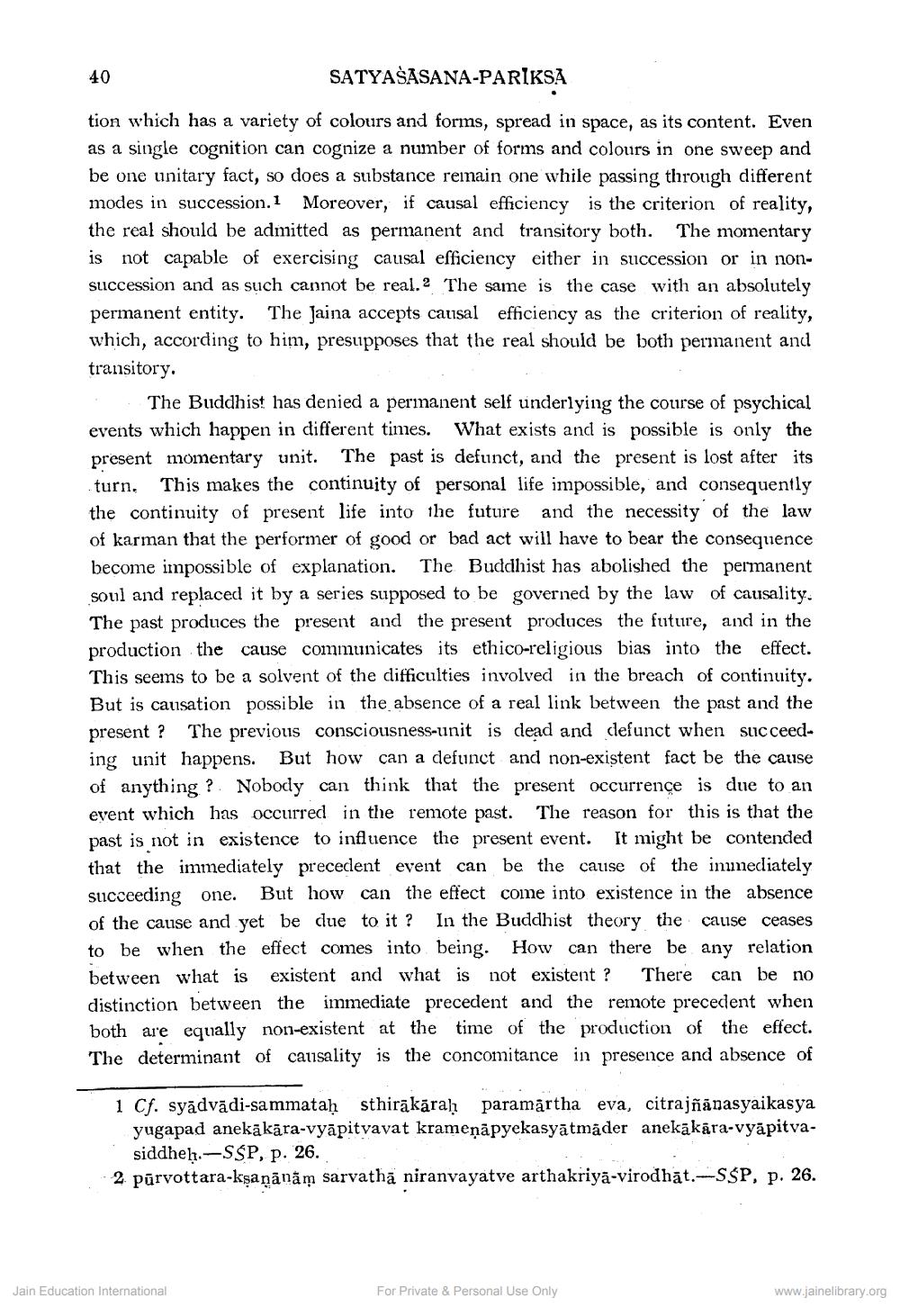________________
40
SATYASASANA-PARIKSA
tion which has a variety of colours and forms, spread in space, as its content. Even as a single cognition can cognize a number of forms and colours in one sweep and be one unitary fact, so does a substance remain one while passing through different modes in succession.1 Moreover, if causal efficiency is the criterion of reality, the real should be admitted as permanent and transitory both. The momentary is not capable of exercising causal efficiency either in succession or in nonsuccession and as such cannot be real.2 The same is the case with an absolutely permanent entity. The Jaina accepts causal efficiency as the criterion of reality, which, according to him, presupposes that the real should be both permanent and transitory.
The Buddhist has denied a permanent self underlying the course of psychical events which happen in different times. What exists and is possible is only the present momentary unit. The past is defunct, and the present is lost after its turn. This makes the continuity of personal life impossible, and consequently the continuity of present life into the future and the necessity of the law of karman that the performer of good or bad act will have to bear the consequence become impossible of explanation. The Buddhist has abolished the permanent soul and replaced it by a series supposed to be governed by the law of causality. The past produces the present and the present produces the future, and in the production the cause communicates its ethico-religious bias into the effect. This seems to be a solvent of the difficulties involved in the breach of continuity. But is causation possible in the absence of a real link between the past and the present ? The previous consciousness-unit is dead and defunct when succeeding unit happens. But how can a defunct and non-existent fact be the cause of anything? Nobody can think that the present occurrence is due to an event which has occurred in the remote past. The reason for this is that the past is not in existence to influence the present event. It might be contended that the immediately precedent event can be the cause of the inmediately succeeding one. But how can the effect come into existence in the absence of the cause and yet be due to it? In the Buddhist theory the cause ceases to be when the effect comes into being. How can there be any relation between what is existent and what is not existent ? There can be no distinction between the immediate precedent and the remote precedent when both are equally non-existent at the time of the production of the effect. The determinant of causality is the concomitance in presence and absence of
1 Cf. syādvādi-sammataḥ sthirākārah paramartha eva, citrajñānasyaikasya yugapad anekā kāra-vyāpitvavat krameņāpyekasyātmåder anekākāra-vyāpitva
siddheh.-SSP, p. 26. 2 pūrvottara-kşaņānām sarvathā niranvayatve arthakriyā-virodhāt.-SŚP, p. 26.
Jain Education International
For Private & Personal Use Only
www.jainelibrary.org




